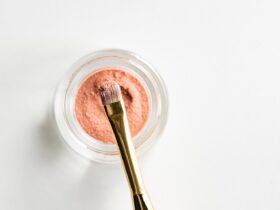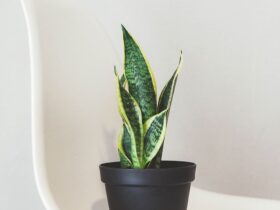Perfume atomizers, also known as perfume sprayers, are essential tools for dispensing fragrances. They provide a controlled and even application, enhancing the overall perfume experience. This comprehensive guide will delve into what a perfume atomizer is, its components, how it works, different types, benefits, how to choose the right one, maintenance tips, and more.
Understanding the Perfume Atomizer
At its core, a perfume atomizer is a device designed to convert liquid perfume into a fine mist. This mist is then sprayed onto the skin or clothing, allowing the fragrance to disperse evenly and last longer. Unlike simply dabbing perfume, which can lead to uneven application and a concentrated scent in one spot, atomizers distribute the fragrance more broadly.
Components of a Perfume Atomizer
While different types of atomizers may vary slightly in design, most share the same fundamental components:
- Container (Bottle): This holds the perfume liquid. It’s typically made of glass or plastic and can come in various shapes and sizes.
- Pump: The heart of the atomizer. It’s responsible for drawing the liquid from the bottle and propelling it through the nozzle.
- Dip Tube (Straw): A small tube that extends from the pump down into the bottle, allowing the pump to draw up the perfume.
- Actuator (Button): The part you press to activate the pump.
- Nozzle: A small opening that the perfume is forced through, creating the fine mist. The design of the nozzle is crucial for achieving the desired spray pattern.
- Housing: The outer casing that holds all the components together and provides a comfortable grip.
How a Perfume Atomizer Works
The mechanism of a perfume atomizer is based on Bernoulli’s principle, which states that an increase in the speed of a fluid (in this case, air) is accompanied by a decrease in pressure. Here’s a breakdown of the process:
- Actuation: When you press the actuator (button), you’re pushing down on the pump mechanism.
- Pump Action: The pump creates a vacuum within the chamber. This vacuum draws the perfume up through the dip tube and into the pump chamber.
- Forcing the Liquid: As you continue pressing the actuator, the pump forces the liquid perfume through a small opening (the nozzle).
- Atomization: The high-speed passage of the liquid through the nozzle, combined with the surrounding air pressure, causes the liquid to break into tiny droplets, creating a fine mist.
- Spray Dispersion: The fine mist is then sprayed outwards, distributing the perfume evenly over the targeted area.
Types of Perfume Atomizers
Perfume atomizers come in various forms, each with its own advantages and disadvantages:
- Standard Atomizers: These are the most common type, found on most commercially available perfume bottles. They are generally reliable and provide a decent spray pattern.
- Travel Atomizers: Small, portable atomizers designed for carrying perfume on the go. They are often refillable and made from durable materials.
- Vintage Atomizers: Often featuring elaborate designs and bulb-shaped pumps, these atomizers add a touch of elegance to the perfume application process. They may not be as efficient as modern atomizers but are prized for their aesthetic appeal.
- Fine Mist Sprayers: Designed to produce an exceptionally fine and even mist, ideal for fragrances that require a delicate application.
- Airless Pump Atomizers: These atomizers don’t use a dip tube. Instead, the pump creates a vacuum that draws the perfume up from the bottom of the container. This type of atomizer is often preferred for its ability to dispense nearly all of the product and prevent contamination.
Benefits of Using a Perfume Atomizer
Using a perfume atomizer offers several advantages over other methods of fragrance application:
- Even Distribution: Atomizers provide a more even and consistent distribution of perfume compared to dabbing or pouring.
- Enhanced Longevity: The fine mist allows the perfume to adhere better to the skin and clothing, potentially extending its longevity.
- Controlled Application: Atomizers allow you to control the amount of perfume applied, preventing over-application.
- Reduced Waste: By dispensing perfume in a controlled manner, atomizers minimize waste.
- Hygiene: Atomizers prevent direct contact between your fingers and the perfume, reducing the risk of contamination.
- Portability: Travel atomizers make it easy to carry your favorite fragrances with you wherever you go.
Choosing the Right Perfume Atomizer
Selecting the right perfume atomizer depends on your individual needs and preferences. Consider the following factors:
- Purpose: Are you looking for an atomizer for everyday use, travel, or a special occasion?
- Size: Choose a size that suits your needs. Travel atomizers are typically smaller, while standard atomizers can be larger.
- Material: Opt for atomizers made from durable materials such as glass or high-quality plastic.
- Spray Quality: Look for atomizers that produce a fine and even mist.
- Ease of Use: Choose an atomizer that is easy to fill, operate, and clean.
- Aesthetics: Consider the design and appearance of the atomizer if you value aesthetics.
- Price: Atomizers range in price from inexpensive to very expensive. Set a budget and choose an atomizer that fits your needs and budget.
Maintaining Your Perfume Atomizer
Proper maintenance is essential to keep your perfume atomizer functioning properly and prolong its lifespan:
- Cleaning: Regularly clean your atomizer to prevent clogs and buildup of perfume residue. You can use warm water and a mild detergent to clean the bottle and dip tube. Rinse thoroughly and allow to dry completely before refilling.
- Avoid Overfilling: Do not overfill the atomizer, as this can damage the pump mechanism.
- Storage: Store your atomizer in a cool, dark place to protect the perfume from degradation.
- Check for Leaks: Regularly check the atomizer for leaks. If you notice any leaks, replace the atomizer or repair the damaged parts.
- Avoid Mixing Perfumes: Avoid mixing different perfumes in the same atomizer, as this can alter the scent and potentially damage the atomizer.
Conclusion
Perfume atomizers are valuable tools for anyone who enjoys wearing fragrances. They provide a controlled, even application, enhance the longevity of perfumes, and offer portability. By understanding the components, types, benefits, and maintenance tips outlined in this guide, you can choose the right atomizer for your needs and enjoy a superior fragrance experience.
FAQs
















Leave a Reply